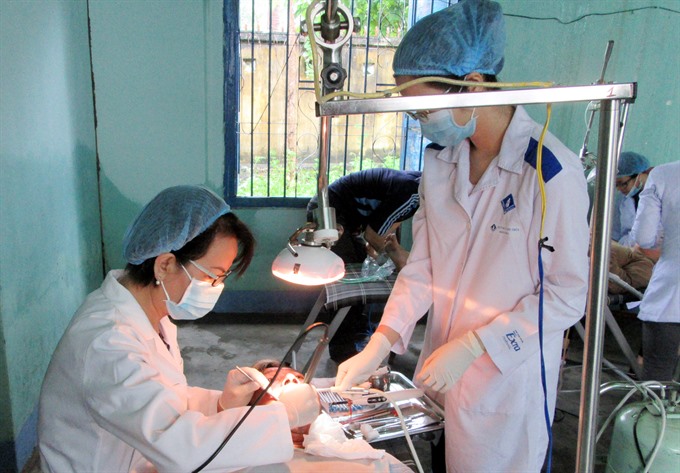 Society
Society

Two years after joining the ASEAN Economic Community (AEC), Việt Nam’s labourers have not tapped the opportunities brought about by greater labour mobility, according to the Ministry of Labour, Invalids and Social Affairs.
 |
| As ASEAN countries seek further integration, they have agreed to allow engineers, nurses, architects, doctors, dentists, surveyors, accountants and tourism professionals from one ASEAN country work in another if they meet certain requirements.--VNA/VNS Photo Nguyễn Thành |
HÀ NỘI – Two years after joining the ASEAN Economic Community (AEC), Việt Nam’s labourers have not tapped the opportunities brought about by greater labour mobility, according to the Ministry of Labour, Invalids and Social Affairs.
As ASEAN countries seek further integration, they have agreed to allow engineers, nurses, architects, doctors, dentists, surveyors, accountants and tourism professionals from one ASEAN country to work in another if they meet certain requirements.
However, Hà Thị Minh Đức, deputy head of the International Relations Department under the labour ministry said that so far only 109 engineers and architects in Việt Nam qualified for mobility requirements.
“While the AEC allows free labour mobility, member countries have requirements for each occupation and they need to discuss among each other how to grant mutual recognition and set up skills standards for these occupations,” Đức said.
“Meanwhile, there’s still a considerable gap among the national occupation skill framework among ASEAN member countries, especially among Cambodia, Laos, Myanmar and Việt Nam,” she said.
The slow mobility was also due to policies of each country, Đức added, saying that after workers meet the general occupation standards, they will also have to meet standards set by each country.
Workers’ ability to work outside their country also depends on local demand.
For instance, a Vietnamese doctor who wants to work in Thailand has to know how to speak Thai. On the other hand, some local employers who want to recruit foreign workers have to prove that they can’t find qualified locals of equal pay to hire a foreigner, she said.
Mạc Văn Tiến from the South East Asia Finance, Investment and Trade Institute, said apart from technical barriers set by ASEAN member countries, slow mobility was also caused by moderate Vietnamese labour skills.
“Vietnamese labourer’s skills in teamwork and working in multi-cultural environments are limited,” Tiến said.
He added that while skills and knowledge can be improved and cultivated, Viet Nam’s preparation for integration has been poor.
“We rank 11 out of 12 Asian countries in terms of labourer quality and our productivity is one third of Malaysia’s and two fifth of Thailand’s,” he said.
Currently, the number of labourers moving among ASEAN countries is 6.5 million, of which 2.28 million are from ASEAN countries and the rest are from outside the bloc. The main destinations are Malaysia, Singapore and Thailand. Most migrant workers to these countries come from Indonesia, Myanmar and Malaysia.
“Việt Nam is not yet a destination nor the starting point for qualified labourers moving in the region,” Tiến said.
What to do
In order to take advantage of free labour flow, the ability to speak foreign languages, professionalism and work ethics are the most important factors, said Nguyễn Thu Trang, Director of Human Resources Recruitment and Consultancy of Manpower Group.
“For the labourers, they need to be able to speak foreign languages, work in a team effectively, learn new skills and adapt new working environments,” Trang said.
“What the Government can do is to be flexible in labour training so that workers can catch up with changes and regional standards. Foreign language skills and soft skills must be improved, and the Government need to work with enterprises to make training programmes more relevant to market demands,” she said.— VNS




